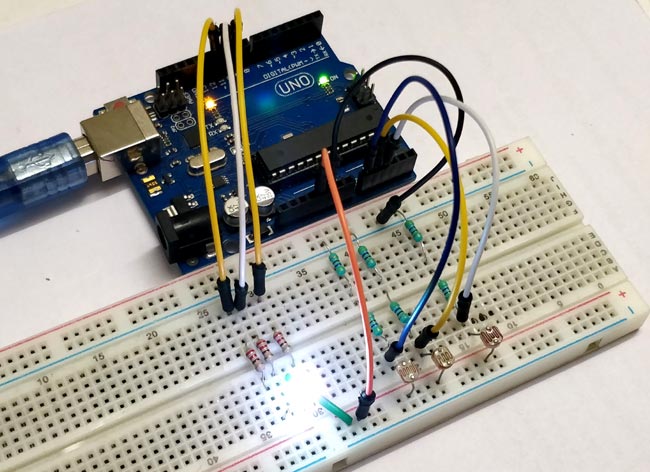
The RGB LED in the simulator has a common cathode (negative, ground) at its second leg, so wire this row/pin to ground.Īdd three resistors (drag all three or create one and then copy/paste) and move them to the breadboard rows for the remaining three LED pins, bridging across the breadboard's center gap to three separate rows on the other side.Ĭonnect wires from the free resistor ends and to three of your PWM-capable Arduino pins, which are marked with a In the Tinkercad Circuits components panel, drag a new Arduino and breadboard along side the sample, and prep your breadboard by connecting Arduino 5V to the power rail and Arduino GND to the ground rail.Īdd an RGB LED and place it across four different rows of the breadboard. The types are called "common cathode" and "common anode," respectively. They have four legs, one for each color and one for either ground or power, depending on the configuration. Color changing LEDs work the same way, but the LEDs are all together in a small package we call an RGB LED.

Mixing these three colors in different levels of intensity can create almost any color of light.
CONTROL LED INTENSITY ARDUINO ANALOGWRITE SOFTWARE
You'll also need a computer with the free Arduino software (or plugin for the web editor).Īdditive, or light-based color has three primary colors: red, green, and blue. Optionally grab your electronics supplies and buildĪlong with a physical Arduino Uno, USB cable, breadboard, RGB LED, resistors (any value from 100-1K ohms will do), and some breadboard wires. You can build either way in the Tinkercad Circuits editor, but if you are also building a circuit with physical components, the breadboard will help your virtual circuit look the same.

Since you might be new to using a breadboard, we've also included the free-wired version of this circuit for comparison. It's perfect for learning, teaching, and prototyping. Tinkercad Circuits is a free browser-based program that lets you build and simulate circuits. You can even view this lesson from within Tinkercad (free login required)! Explore the sample circuit (click Start Simulation to watch the LED change color) and build your own right next to it. You can follow along virtually using Tinkercad Circuits. We'll connect an RGB LED to the Arduino Uno and compose a simple program to change its color.

CONTROL LED INTENSITY ARDUINO ANALOGWRITE HOW TO
Let's learn how to control multi color LEDs using Arduino’s analog outputs.


 0 kommentar(er)
0 kommentar(er)
